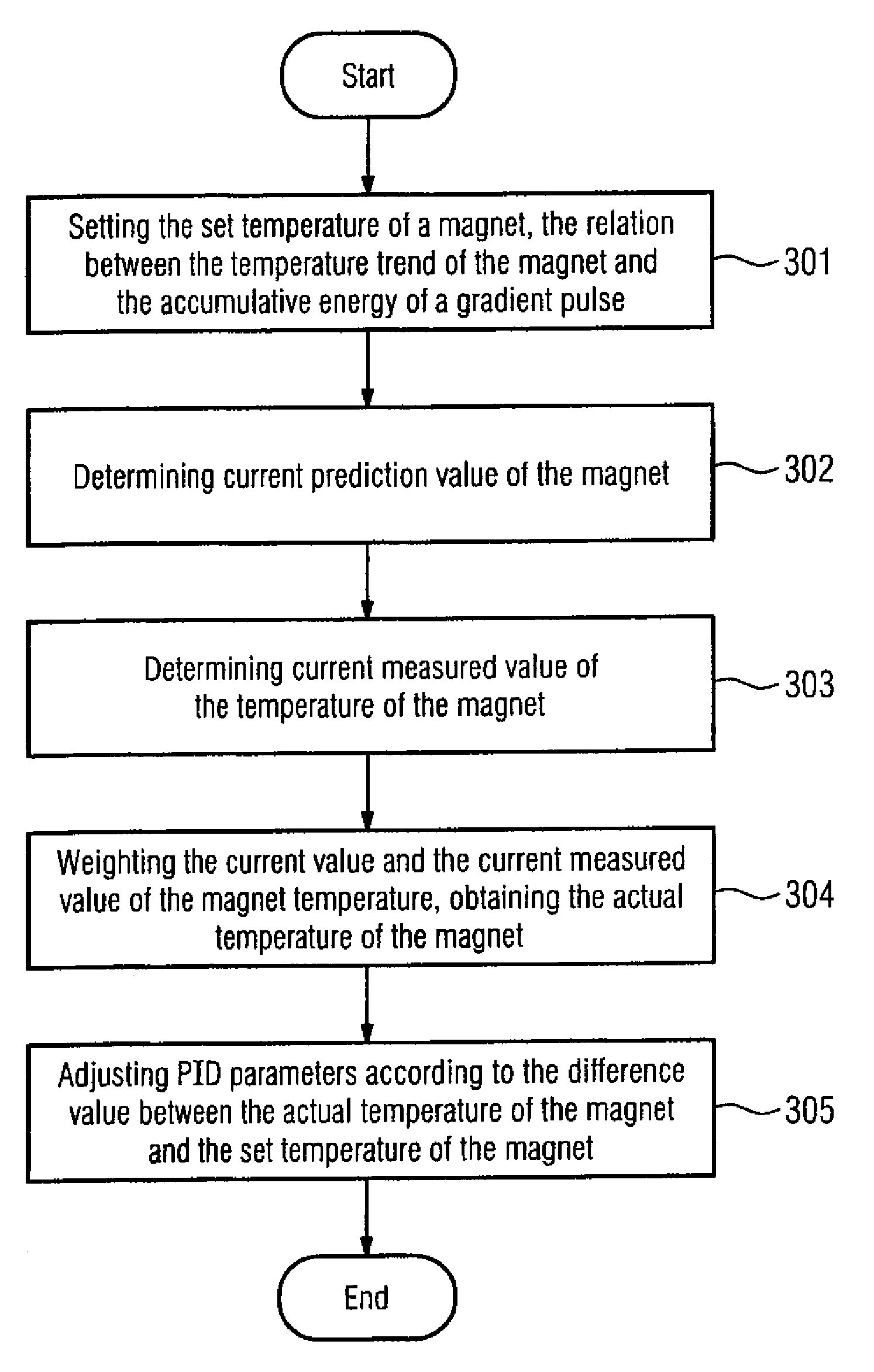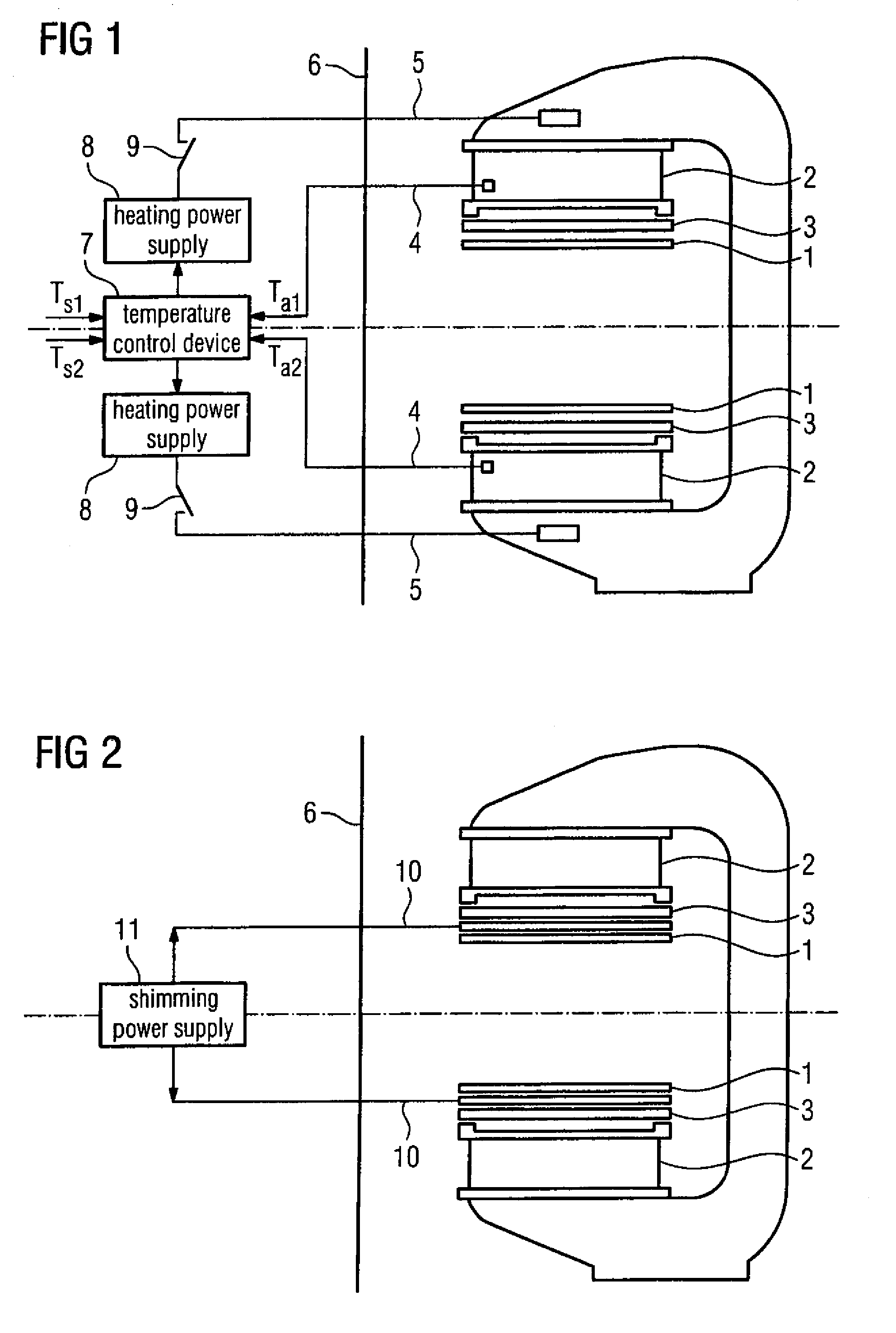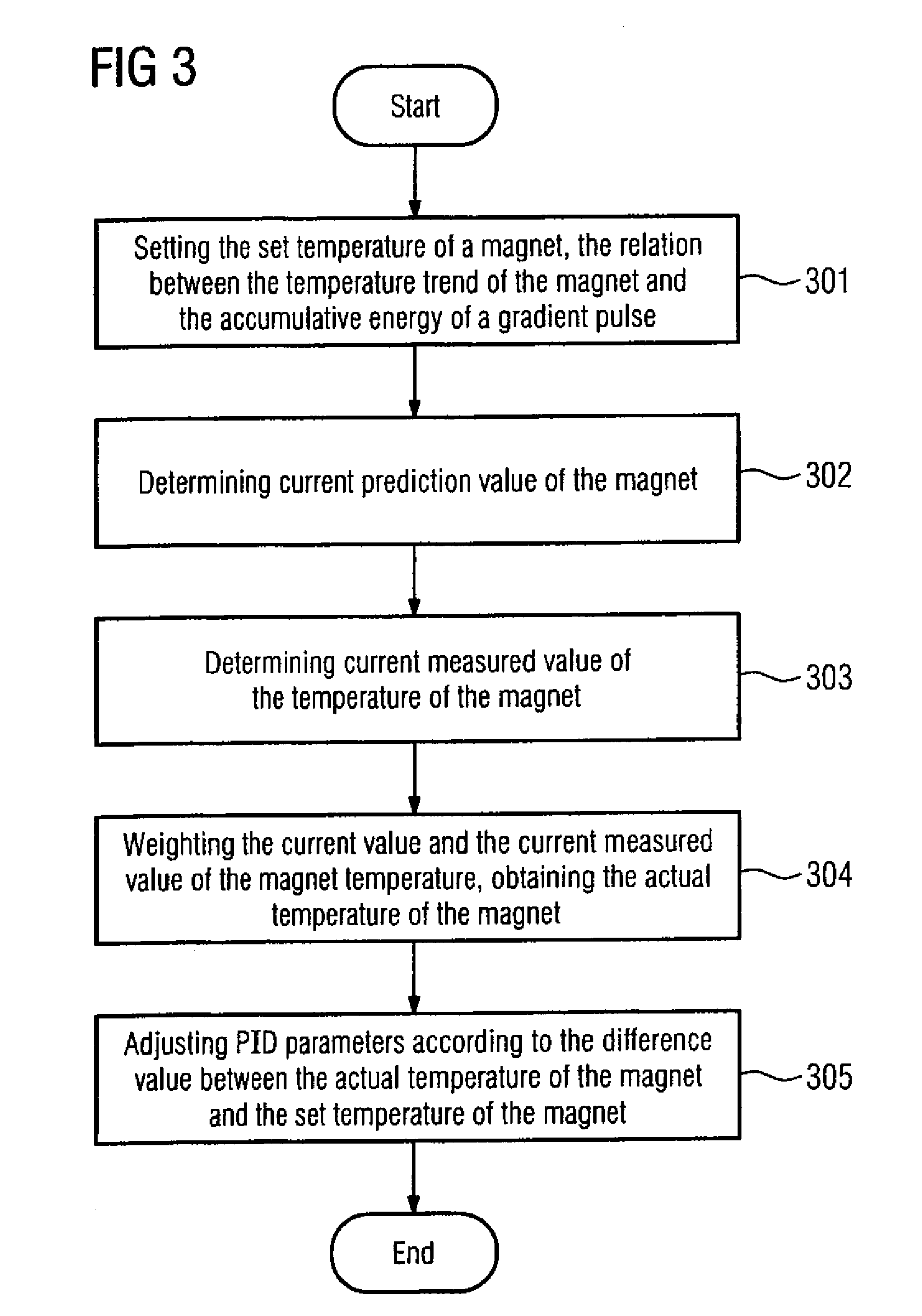Temperature-controlled magnetic resonance imaging method and apparatus
a magnetic resonance imaging and temperature control technology, applied in the field of temperature-controlled magnetic resonance imaging (mri) equipment, can solve the problems of large temperature coefficient, significant temperature increase, deterioration of imaging quality, etc., and achieve the effect of accurate and more synchronously
- Summary
- Abstract
- Description
- Claims
- Application Information
AI Technical Summary
Benefits of technology
Problems solved by technology
Method used
Image
Examples
embodiment one
[0061]This embodiment provides a technical solution in keeping the temperature of a magnet constant by use of the correlation between the magnet temperature drifting trend and the cumulative energy of gradient pulses.
[0062]FIG. 3 is the schematic flowchart of the method of the first embodiment of the present invention for improving the imaging quality of MRI equipment. Referring to FIG. 3, the method comprises:
[0063]Step 301: presetting the set temperature of the magnet in a temperature control device, and presetting the corresponding relationship between the magnet temperature drifting trend of the magnet used in the MRI equipment for imaging and the cumulative energy of gradient pulses.
[0064]In this step, it can set respectively the set temperature of an upper magnet and the set temperature of a lower magnet, and, the corresponding relationship between the set magnet temperature drifting trend and the cumulative energy of gradient pulses can comprise: the corresponding relationshi...
embodiment two
[0119]This embodiment provides a technical solution for dynamically filtering the frequency drifting interference in MRI signals by use of the correlation of the frequency drifting interference of MRI signals within the imaging field of view and the cumulative energy of gradient pulses.
[0120]FIG. 6 is a flowchart of the method for improving the imaging quality of MRI equipment in the second embodiment of the present invention. Referring to FIG. 6, the method includes the following steps.
[0121]Step 601: presetting the corresponding relationship between the frequency drifting interference of MRI equipment within the imaging field of view and the cumulative energy of gradient pulses.
[0122]Before performing the setting in this step 601, many experiments can be carried out, and, by experimental results the corresponding relationship between the frequency drifting interference of MRI signals within the imaging field of view and the cumulative energy of gradient pulses is determined.
[0123]...
PUM
 Login to View More
Login to View More Abstract
Description
Claims
Application Information
 Login to View More
Login to View More - R&D
- Intellectual Property
- Life Sciences
- Materials
- Tech Scout
- Unparalleled Data Quality
- Higher Quality Content
- 60% Fewer Hallucinations
Browse by: Latest US Patents, China's latest patents, Technical Efficacy Thesaurus, Application Domain, Technology Topic, Popular Technical Reports.
© 2025 PatSnap. All rights reserved.Legal|Privacy policy|Modern Slavery Act Transparency Statement|Sitemap|About US| Contact US: help@patsnap.com



